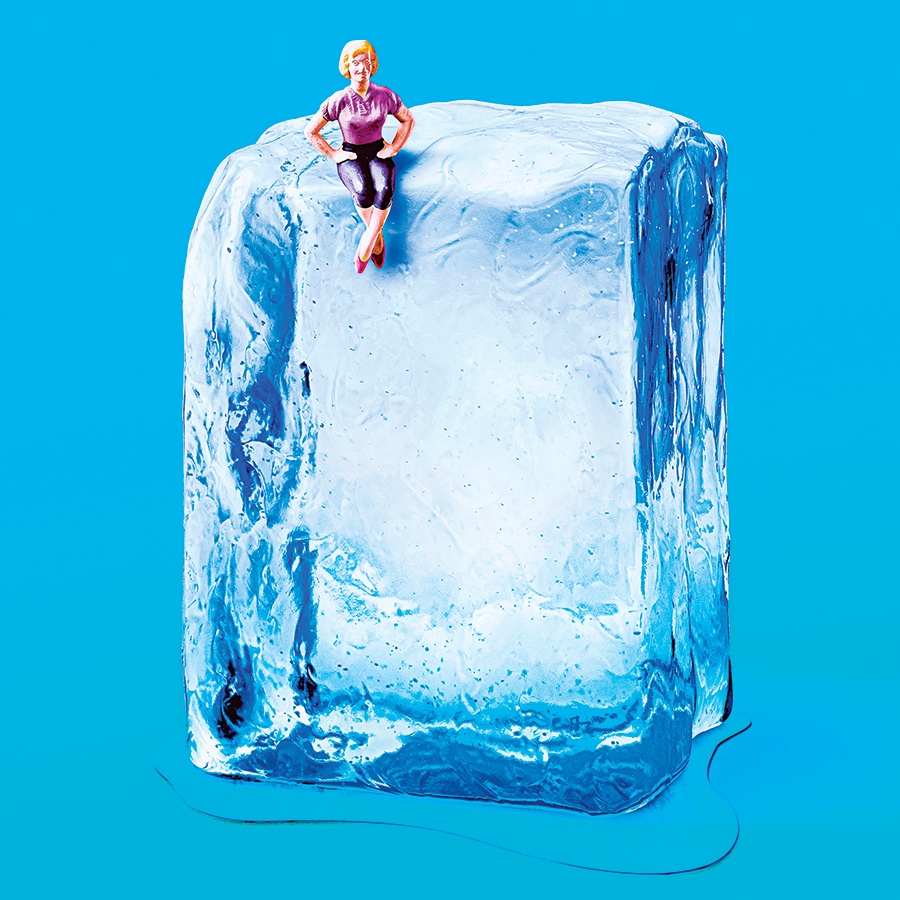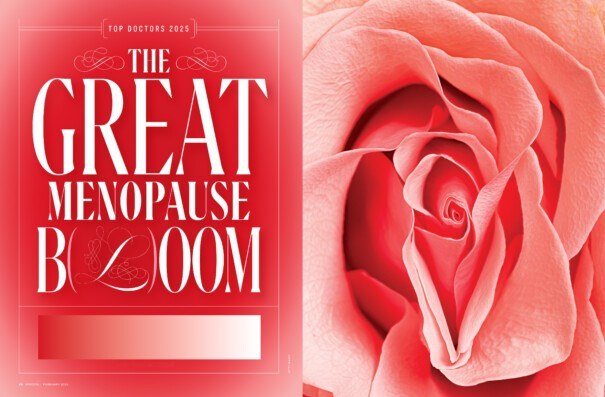You Don’t Need to Shoot a Laser into Your Vagina, After All (Unless You Really Want to)
A Mass General women's midlife health expert evaluates four modern menopause remedies.

Illustration by Benjamen Purvis / Photo via Getty Images
As part of a series on perimenopause, we asked Dr. Jan Shifren, director of Mass General’s Midlife Women’s Health Center, to weigh in on four modern menopause remedies. Her expert opinion follows.
1. Wearable Cooling Devices
What They Promise: Bed-cooling systems and smart cooling wristbands vow to keep you comfortable during hot flashes and night sweats, improving sleep in the process.
The Doctor’s Take: Though it’s true that women with these symptoms tend to feel better in cooler environments, simpler solutions like cotton clothing and sheets, plus a bedside fan, can help manage discomfort without breaking the bank. “There are so many affordable ways to reduce your temperature that it’s hard to see the benefit of these often costly devices,” Dr. Jan Shifren, director of Mass General’s Midlife Women’s Health Center, notes.
2. Vaginal Fractional Laser Treatment
What It Promises: To improve comfort and sexual intimacy through a laser treatment that helps stimulate the body’s rejuvenation of vaginal tissue.
The Doctor’s Take: The laser treatment looked like a game-changer, until Australian researchers discovered women felt better whether they got the real thing or a sham version. “Improvement in symptoms is principally a placebo effect,” Shifren notes. The bottom line? “This is a treatment I do not recommend—it’s very costly, not covered by insurance, and potentially risky—there can be burns to the vagina and vulva. And in the best studies we have, it’s no more effective than a laser that makes a lot of noise but doesn’t provide any laser energy.”
3. Testosterone Therapy
What It Promises: To rev up your sex drive after a menopause-related dip in libido.
The Doctor’s Take: While you will find clinicians in the area offering this therapy to patients, Shifren believes it falls short of the hype. “The benefit from taking testosterone above placebo appears to be very small,” says Shifren, noting a clinical trial she was involved in that demonstrated just one additional satisfying sexual event with testosterone compared to placebo in a four-week period. Plus, it’s not without risks—testosterone therapy isn’t approved by the FDA for use in women, “so it’s typically compounded with very little government oversight or quality data on safety or efficacy.” And there can be icky side effects, including acne, unwanted hair growth, and weight gain.

Photo by Getty Images
4. Acupuncture
What It Promises: To relieve perimenopause symptoms—from irregular periods to hot flashes and mood swings—using strategic needle placement to stimulate the nervous system.
The Doctor’s Take: “The good news about choosing acupuncture is it has been well studied,” Shifren says. “If you go to a certified acupuncturist who is using sterile needles, it is really very safe.” However, the verdict is still out on its effectiveness. “There are some studies with sham acupuncture that show benefit over placebo, and others that do not,” Shifren says. Another benefit is that even placebos have been shown to have a 30 percent reduction in symptoms. And “a 30 percent reduction in hot flashes is pretty terrific,” she notes.


Left: Photo by Getty Images
Related: The Great Menopause B(l)oom
-
- Myth Vs. Fact
- What to Expect
- The Truth About Hormones
- Ask an Expert: Four Modern Remedies
- Boston’s Research Breakthroughs (coming soon)
- Help! I’m Perimenopausal and My Instagram Feed Won’t Stop Selling Me Solutions
First published in the print edition of the February 2025 issue as part of a package on menopause, with the title: “Innovation or Illusion?”


